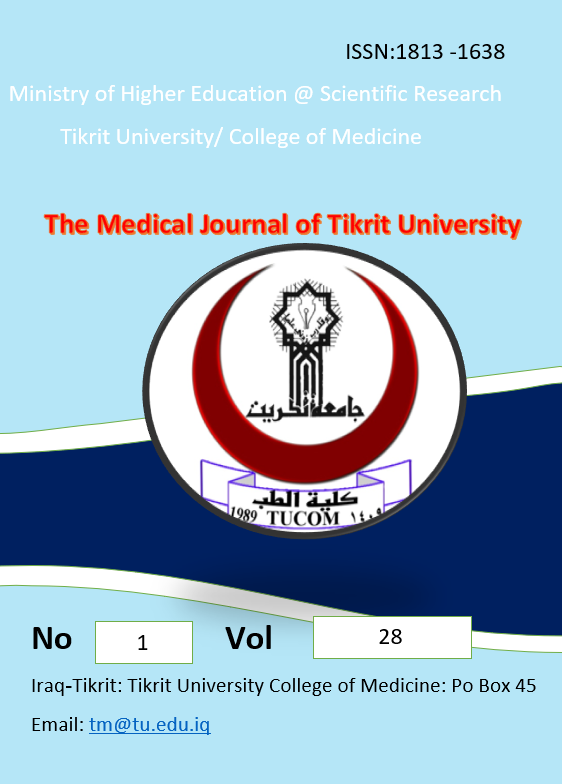Evaluation the role of Osteopontin and other biochemical parameters as prognostic markers in assessing the severity of COVID-19 patients with Pre-Existing Diabetes
Keywords:
Diabetes, Osteopontin, Crp, D_Dimer., Covid19Abstract
Background: COVID-19 is a new coronavirus that has the potential to be deadly. The World Health Organization (WHO) has declared the COVID-19 outbreak to be an international public health emergency. According to new evidence, comorbid diabetes in COVID-19 patients is linked to disease progression and even death. Aim of study is to evaluate the role of serum osteopontin, CRP and D-Dimer activity in the severity of covid19 and possibility of using these biomarker as predictors for mortality of covid19 in diabetic patients.
Patients and methods: This is a cross sectional, hospital based study. This study was carried out from 1st December 2021 to 30th January 2022 and included 60 Patients admitted to COVID19 isolation centers in Alshefa-14 and Kirkuk general hospital (30 COVID-19 without D.M and 30 COVID-19 with D.M) and 30 control samples. All data were collected through a face-to-face interview by a questionnaire.
Results: The current study showed a significant increase in all the measured parameters in patients with positive COVID-19 when compared to control group with no apparent clinical diseases. D-dimer increased in patients by a mean of (3215 ng/l, SD ± 50) when compared to control group (218 ng/L SD ± 27.3) with (p-value <0.05). And when this level is compared between the patient groups (severe non-diabetic, sever diabetic and mild), it’s noted that its level mostly increased in the severe non-diabetic (3912 ng/l, SD ± 49.99) and sever diabetic (1602 ng/l, SD ± 1602) patient group when it is compared to the control and mild group with (P value < 0.05). CRP increased in the severe non-diabetic (111 mg/dl, SD ± 18.30) and sever diabetic (162 mg/dl, SD ± 23.0) patient groups more than both mild (15 mg/dl, SD ± 16.6) patient groups and control group (5 mg/dl, SD ± 1.22) with (p-value <0.05). Osteopontin concentration is increased in the patients sever diabetic (29.31ng/ml, SD ± 1.64) and sever non-diabetic group (21.27 ng/ml, SD ± 1.96) when it’s compared with control group (11.59 ng/ml, SD ± 3.21) with (p-value <0.05). And its level is the highest in Sever patient group when compared with the both mild (diabetic and non-diabetic) patient groups (9.79 ng/ml, SD ± 3.0) and control group (10.1 ng/ml, SD ± 3.21) with (p-value <0.05). Because higher levels of D-dimer, CRP and Osteopontin were linked to a worse prognosis and outcome, these measures can be used as predictors for illness progression or follow-up after therapy.





